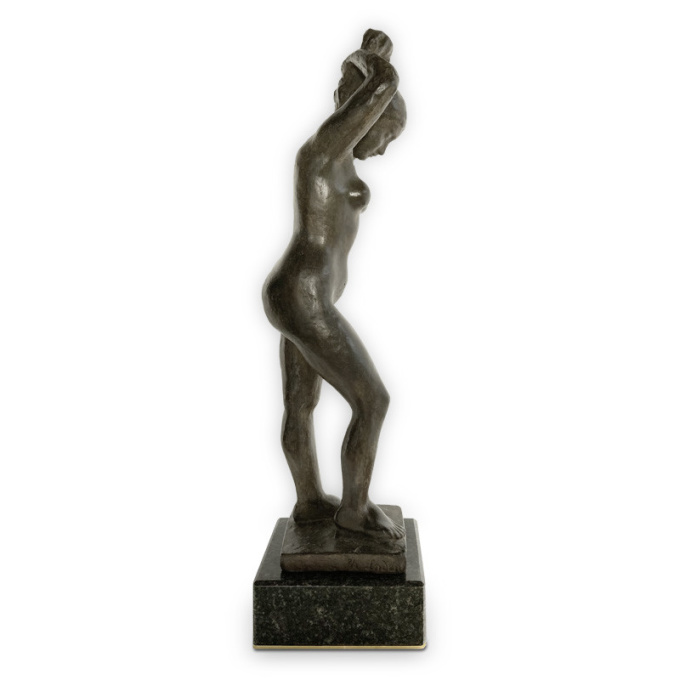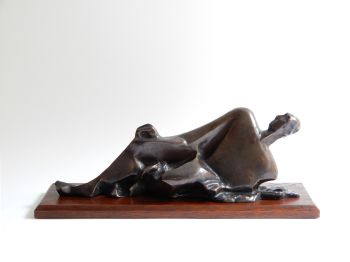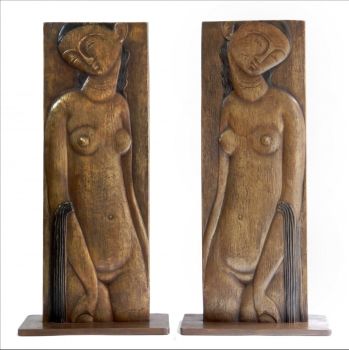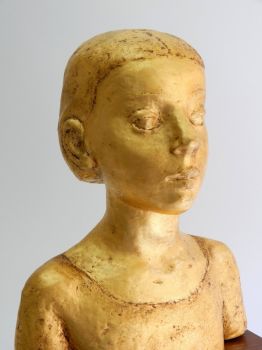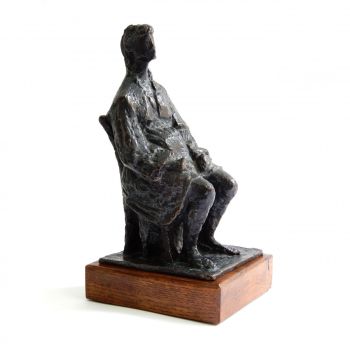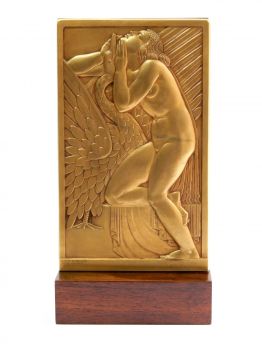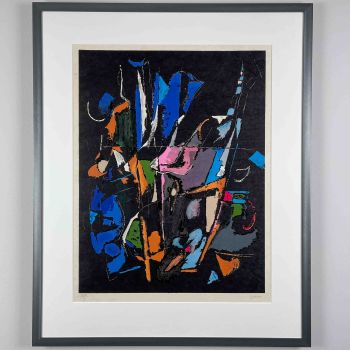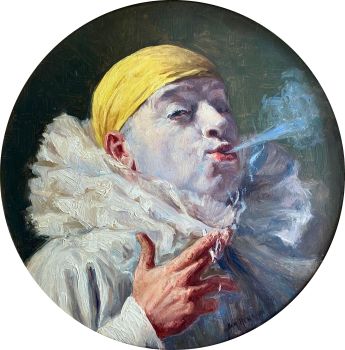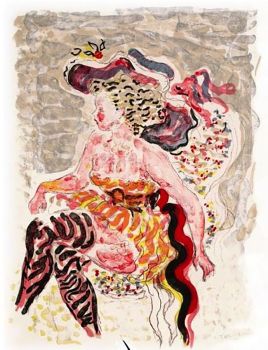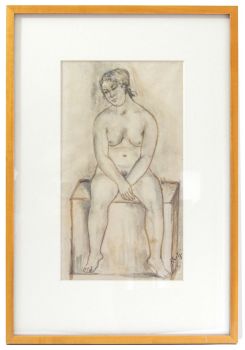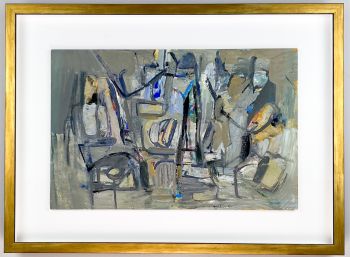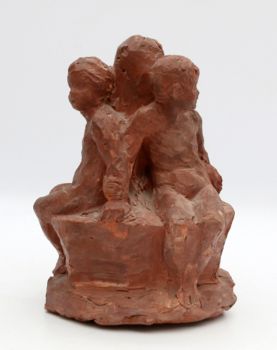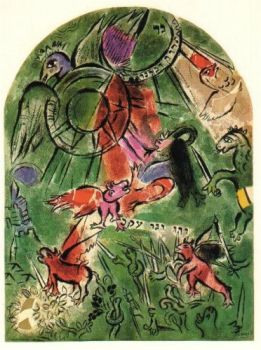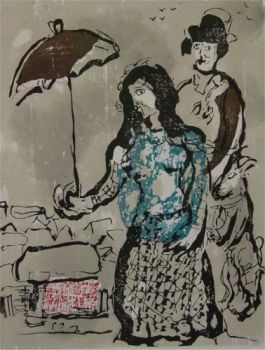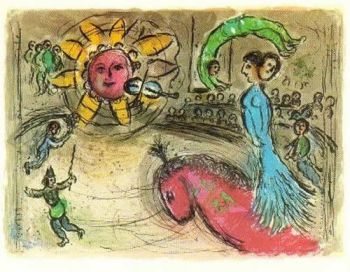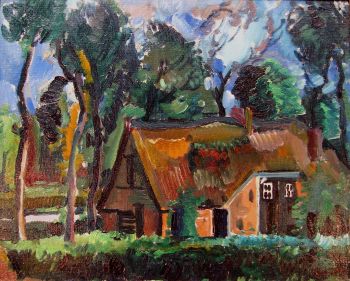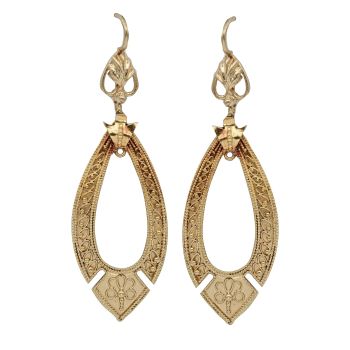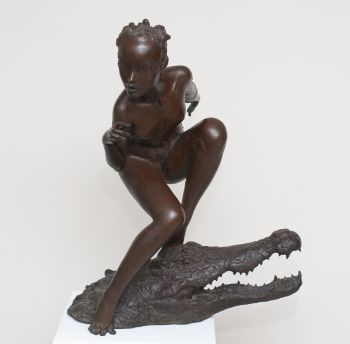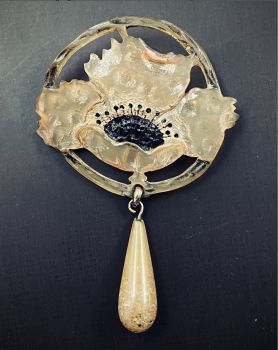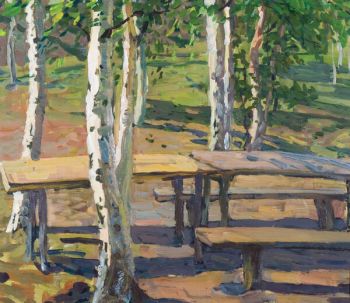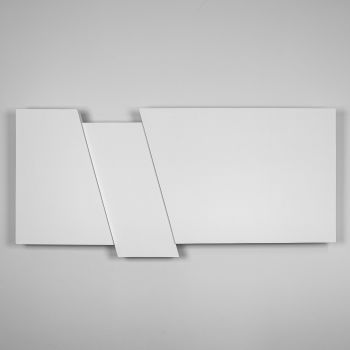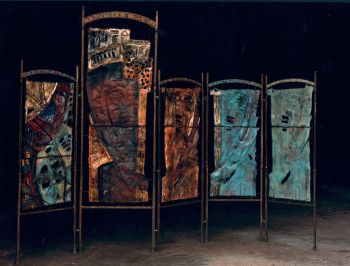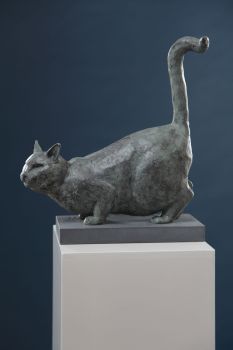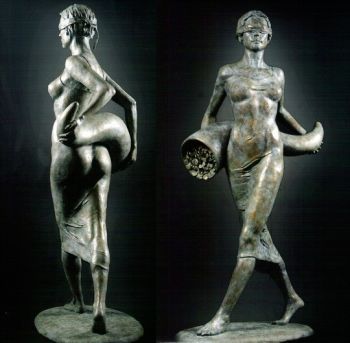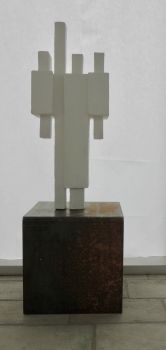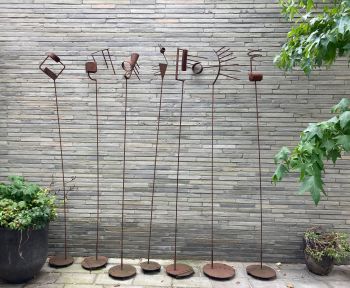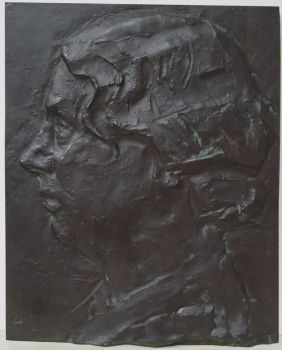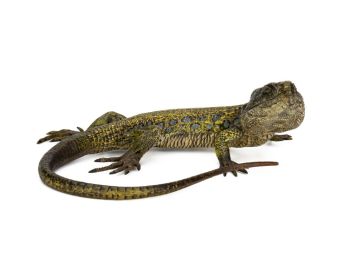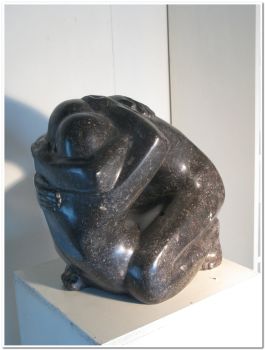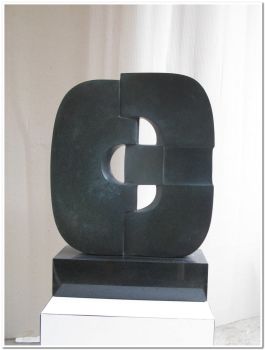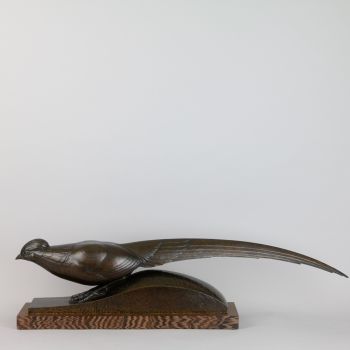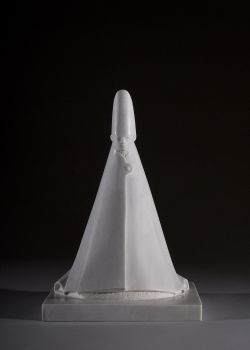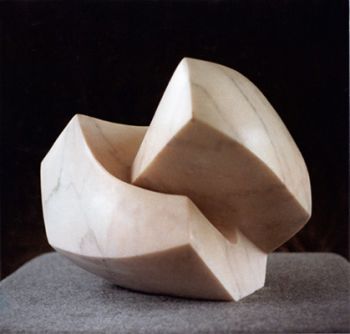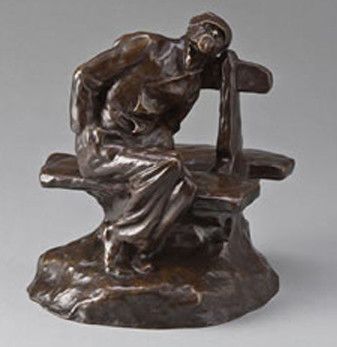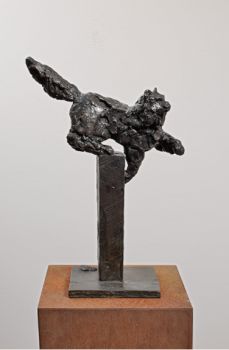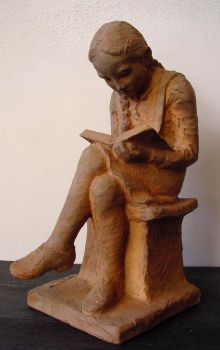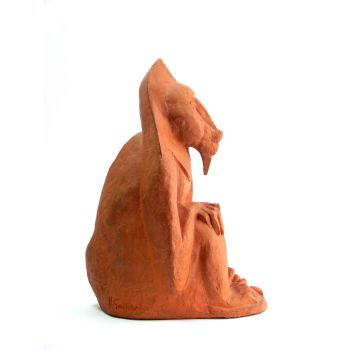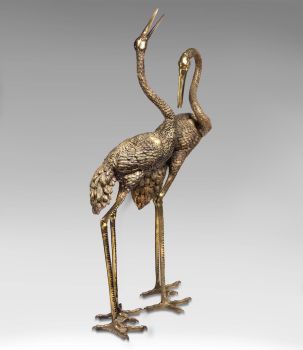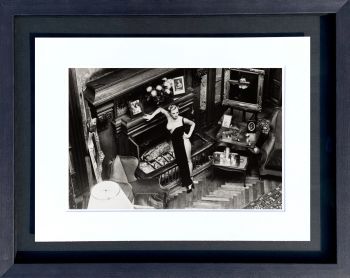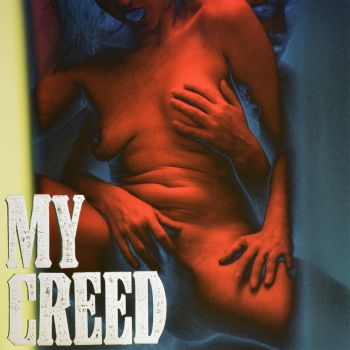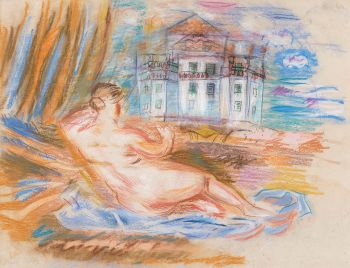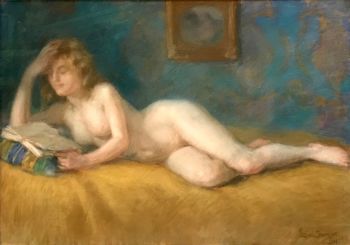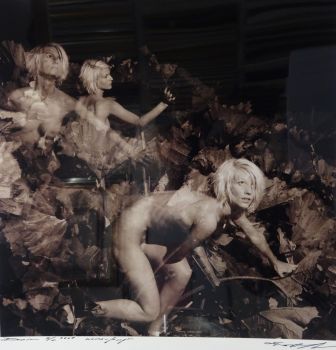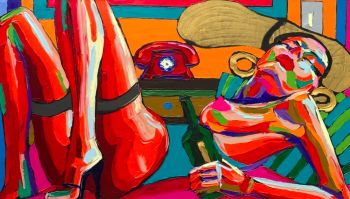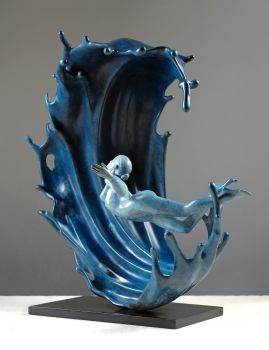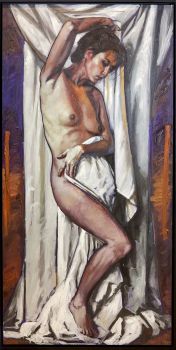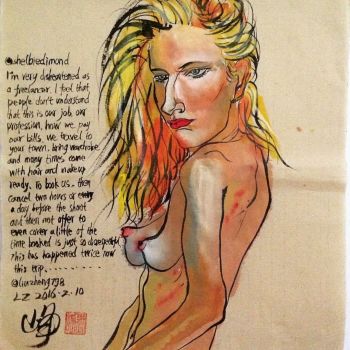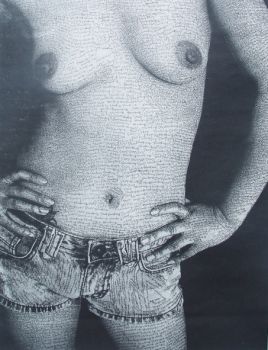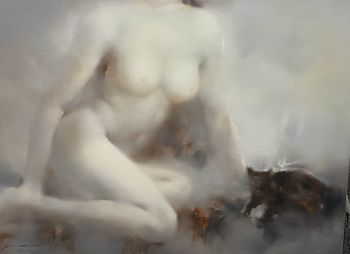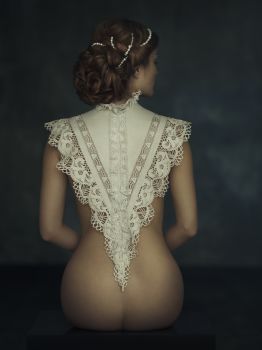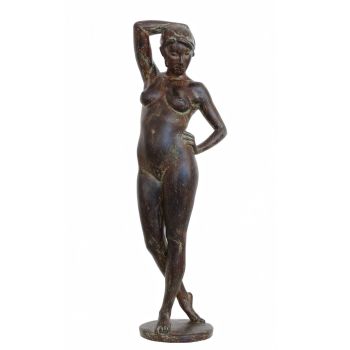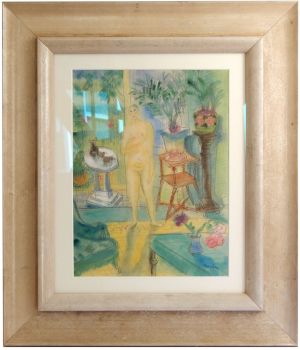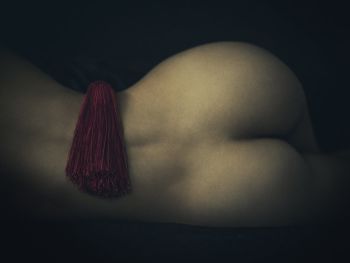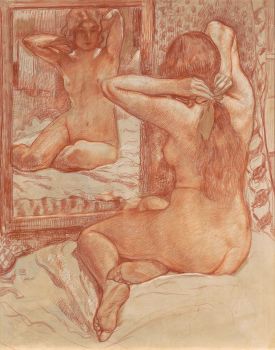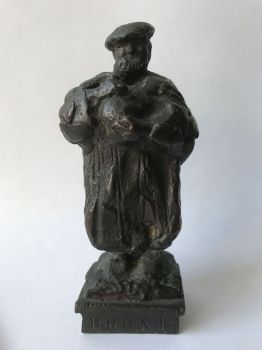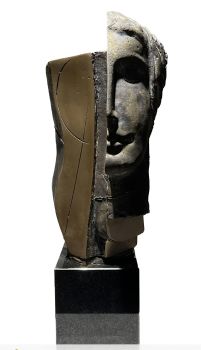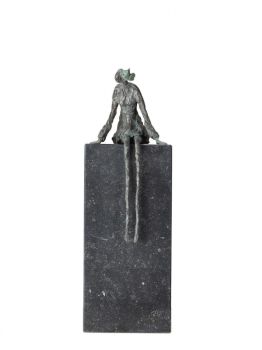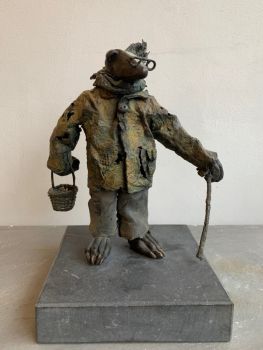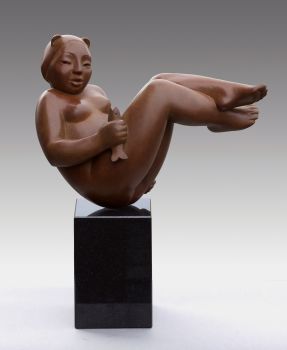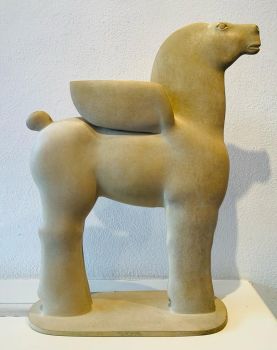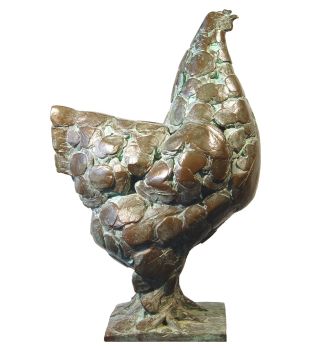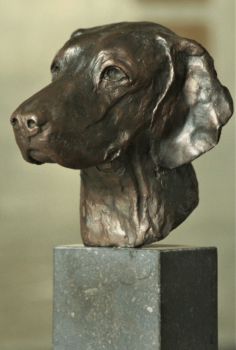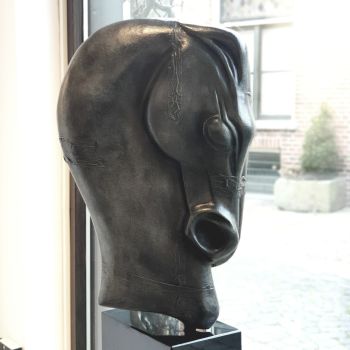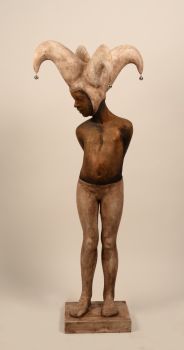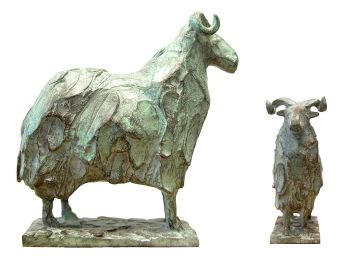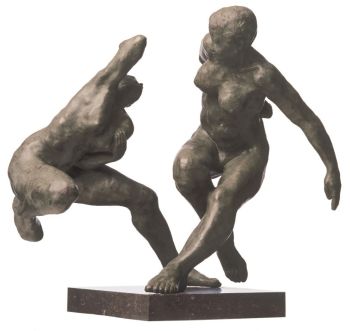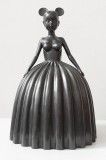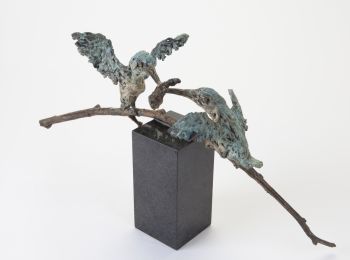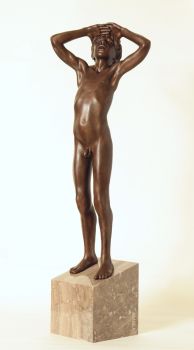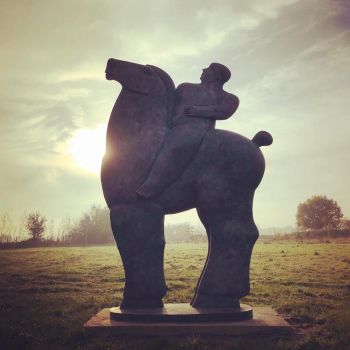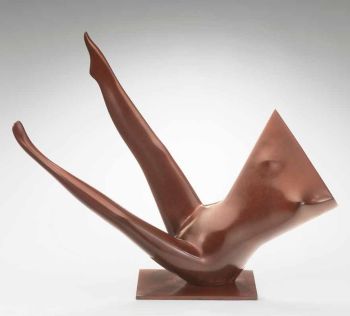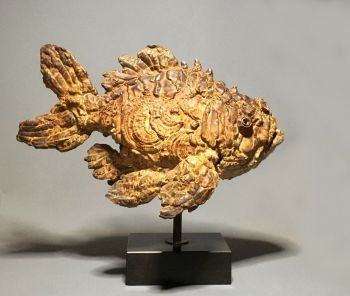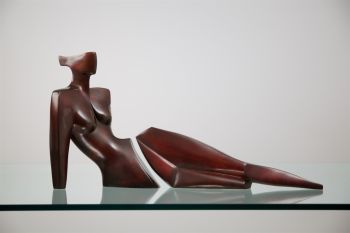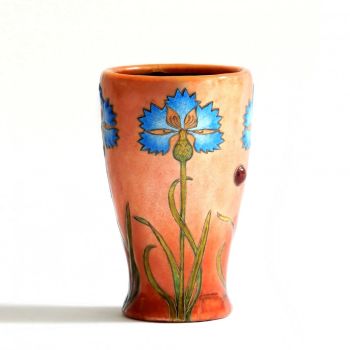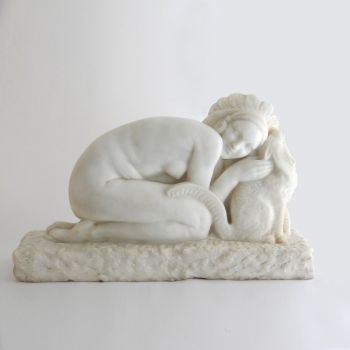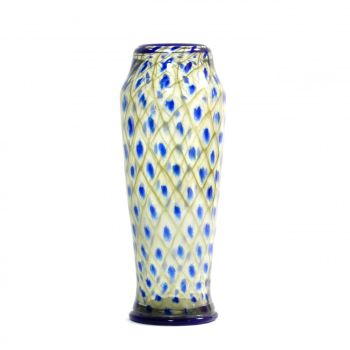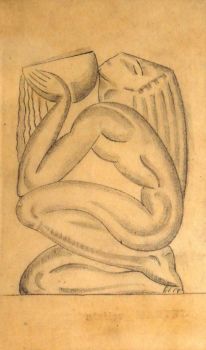'Femme nue' 1926 - 2021
Léon Indenbaum
BronzeMétal
43 cm
ConditionExcellent
Actuellement indisponible via Gallerease
Dille Art
- Sur l'oeuvre d'art
Beautiful sculpture of a naked woman putting her hair up. Léon Indenbaum made her in 1926, several years later he made a variation on this sculpture. Photos of this sculpture can also be found in the book that Adolph Basler wrote in 1933 about Léon Indenbaum. This bronze is 43 cm. high, it is a posthumous casting No. 2/8. The no. 1/8 is in the possession of the family, as is the original plaster. The family had this sculpture cast in bronze posthumously, with the reason that they would like to bring the work of their grandfather to the attention. Indenbaum is known to the connoisseurs, but not to the general public. These posthumous works are therefore a first and last edition of a maximum of 12 copies. Each sculpture is numbered and officially registered, maximum 8 copies numbered 1-8 and four copies signed EA I to EA IV. (EA stands for Epreuve d'Artiste). More copies will not be cast either. The most sculptures do not make it to 12 copies, they are not being cast in advance. This work also includes an official certificate signed by Léon Indenbaum's grandson. This sculpture and its certificate are also registered with ADAGP (Société des authors dans les arts graphiques et plastiques) in Paris. The work is signed with 'Inden', 2/8" 'Cire perdue' and the hallmark of the bronze founder 'ILHAT'. About the artist Léon Indenbaum (Tcherikov, now Belarus, 1890 - Opio, 1981), was a Russian/French sculptor belonging to the group of artists of the École de Paris. His art was innovative, inspired by the classics, but also by African art, Cubism and Expressionism. Indenbaum grew up in the shtetl (Eastern European Jewish village) Tcherikov, with his grandfather, who was a bookbinder of art books. After primary school, he trained as a woodworker. The director of that school thought he was so talented that he arranged for him to go to the Academy of Decorative Arts in Vilnius. After this training, Indenbaum wanted more and was admitted to the Imperial Academy in Odessa. He went through it for a few years until he ticked a wrong box on a form, he had accidentally signed for 5 years military service in the Imperial Army. He already had contacts with an artist friend who was in Paris, where so much was happening in the field of art. Indenbaum managed to escape from Vilnius with the help of an engineer and arrived in Paris in March 1911. He ended up in 'La Ruche' in Montparnasse, a kind of artists' village. La Ruche was a circular building, it served as a wine pavilion at the 1900 World's Fair, and was rebuilt by the successful artist Alfred Boucher. Boucher wanted to give poor artists a chance to devote themselves completely to their art. La Ruche was a large round building full of studio apartments, each room had the shape of a slice of pie, in the point a space for a kitchen and storage and above the door was a small loft where you could sleep, often such a studio also had to be yet to be shared. Indenbaum got a studio on the 2nd floor, next to Chagall, who, like himself, had also just arrived from Russia. Indenbaum lived in La Ruche until 1927. He did have a second studio in Montparnasse for a while. In total, about 200 artists lived in La Ruche, many of them from Eastern Europe and many of them Jewish. Some of them have become world famous with their art, think of Chaïm Soutine, Ossip Zadkine, Jacques Lipschitz, Chana Orloff, Michael Kikoïne, Moïse Kisling , Amadeo Modigliani to name a few. From 1911 to 1919, Indenbaum studied sculpture at the Académie La Grande Chaumière with the sculptor and painter Antoine Bourdelle, first as a student, later also as his assistant. In 1912 Indenbaum already exhibited at the Paris Salon d'Artistes Indépendents, he was very poor and his choice of materials was cheap. Jacques Doucet, the great art collector and famous couturier, saw a bust of Indenbaum and summoned him to his home, he wanted the same bust made in a different material, Indenbaum managed to get a piece of onyx. Doucet was very pleased and asked Indenbaum to make a relief for his round dining room. Indenbaum received 1000 francs a month. Indenbaum had found his patron. He made one of his most impressive reliefs, entitled 'Musiciens et antelopes' from 1914, made of pink onyx. It was auctioned at Christie's in 2004 for 3.3 million euros. Besides Jacques Doucet, the couturier René Poiret, the bankers George and Marcel Bénard and the decorator, designer and collector Marcel Coard were regular customers of Léon Indenbaum's sculptures and reliefs. Léon fell in love with Céline Hénin, she became his muse and his wife, at the end of 1914 they had a daughter, Dinah. Indenbaum was doing well. He had many friends, such as the artists Chaim Soutine, Amadeo Modigliani, with whom he also shared a studio for a period, Tsuguharu Foujita, Chana Orloff, Michael Kikoïne, and Diego Rivera. Amadeo Modigliani and Diego Rivera both portrayed Indenbaum in 1913 and 1916. Indenbaum himself also portrayed several of his friends. It was the happiest period of his life. With the stock market crash of 1929, life became much more difficult, people lost their fortunes and could no longer afford works of art. The political situation in France also changed. The artists from La Ruche and Montparnasse were mostly migrants, at the Paris Salon they were not allowed to hang out among the French artists, an art critic, André Warnod, had given them the nickname 'École de Paris', to show that this innovative avant-garde garde art was also French art. In the 1930s this name was used derogatoryly, they were looked down upon, their art was called depraved and because many of them were Jewish, there was also anti-Semitism. They were ignored in the press and in the late 1930s they were no longer allowed to exhibit. Some artists went abroad. When the war broke out, many had to flee or go into hiding. Indenbaum has also had to leave Paris in a hurry. He found a hiding place in a village in the Seine et Marne, where he always got his clay. He was lucky and survived the war, more than 60 percent of the Jewish artists in La Ruche died in the camps. After the war, Indenbaum settled in Paris again. His studio had been looted and what was left was sometimes destroyed. He lived a very withdrawn life. He had already been separated from Céline before the war, his daughter lived in the south of France. His friends had either not survived the war or had become much too commercial in his view. He never wanted to commit to a gallery, he felt that he sold his soul, his independence as an artist was at stake, the result was that he was ignored by a large part of the art world. His now famous friends had signed and they were doing well. Indenbaum wanted nothing more than to work in complete freedom, but in doing so he threw in his own glasses. He also refused, for example, major commissions from the French state for work on monuments and facades of special buildings. In 1968 Indenbaum received the prestigious Prix de sculpture Georges Wildenstein, from the Institut de France, for his entire body of work. In recent years he lived with his daughter in Opio. He died at the age of 91. A long life entirely devoted to creating art. Léon Indenbaum's work can be seen in various museums, including in the United States, Switzerland, Russia, Belarus, Israel and of course in France. Sometimes his work is also auctioned at the major auction houses such as Christies, Sotheby's and MacDougall in London.
- Sur l'artiste
Léon Indenbaum (Tcherikov, aujourd'hui Biélorussie, 1890 - Opio, 1981), était un sculpteur franco-russe appartenant au groupe d'artistes de l'École de Paris. Son art était novateur, inspiré des classiques, mais aussi de l'art africain, du cubisme et de l'expressionnisme.
Indenbaum a grandi dans le shtetl (village juif d'Europe de l'Est) Tcherikov, avec son grand-père, qui était relieur de livres d'art. Après l'école primaire, il suit une formation de menuisier. Le directeur de cette école le jugea si talentueux qu'il s'arrangea pour qu'il fréquente l'Académie des Arts Décoratifs de Vilnius.
Après cette formation, Indenbaum en voulait plus et fut admis à l'Académie impériale d'Odessa. Il l'a vécu pendant quelques années jusqu'à ce qu'il coche une mauvaise case sur un formulaire, il avait accidentellement signé pour 5 ans de service militaire dans l'armée impériale. Il avait déjà des contacts avec un ami artiste qui était à Paris, où tant de choses se passaient dans le domaine de l'art. Indenbaum parvient à s'échapper de Vilnius avec l'aide d'un ingénieur et arrive à Paris en mars 1911.
Il s'est retrouvé à « La Ruche » à Montparnasse, sorte de village d'artistes. La Ruche était un bâtiment circulaire, il servait de pavillon des vins à l'Exposition universelle de 1900 et fut reconstruit par l'artiste à succès Alfred Boucher. Boucher voulait donner aux artistes pauvres une chance de se consacrer entièrement à leur art. La Ruche était un grand bâtiment rond plein de studios, chaque pièce avait la forme d'une part de tarte, au point un espace pour une cuisine et des rangements et au dessus de la porte se trouvait un petit loft où l'on pouvait dormir, souvent un tel studio devait également être encore à partager.
Indenbaum a obtenu un studio au 2e étage, à côté de Chagall, qui, comme lui, venait lui aussi d'arriver de Russie. Indenbaum a vécu à La Ruche jusqu'en 1927. Il a eu un deuxième atelier à Montparnasse pendant un certain temps.
Au total, environ 200 artistes vivaient à La Ruche, beaucoup d'entre eux venaient d'Europe de l'Est et beaucoup d'entre eux étaient juifs. Certains d'entre eux sont devenus mondialement connus avec leur art, pensez à Chaïm Soutine, Ossip Zadkine, Jacques Lipschitz, Chana Orloff, Michael Kikoïne, Moïse Kisling, Amadeo Modigliani pour n'en citer que quelques-uns.
De 1911 à 1919, Indenbaum étudie la sculpture à l'Académie La Grande Chaumière avec le sculpteur et peintre Antoine Bourdelle, d'abord comme élève, puis comme assistant.
En 1912, Indenbaum exposait déjà au Salon d'Artistes Indépendants de Paris, il était très pauvre et son choix de matériaux était bon marché. Jacques Doucet, le grand collectionneur d'art et célèbre couturier, a vu un buste d'Indenbaum et l'a convoqué chez lui, il voulait le même buste réalisé dans une matière différente, Indenbaum a réussi à obtenir un morceau d'onyx. Doucet était très content et a demandé à Indenbaum de faire un relief pour sa salle à manger ronde. Indenbaum touchait 1000 francs par mois. Indenbaum avait trouvé son patron. Il a réalisé l'un de ses reliefs les plus impressionnants, intitulé 'Musiciens et antilopes' de 1914, en onyx rose. Il a été adjugé chez Christie's en 2004 pour 3,3 millions d'euros.
Outre Jacques Doucet, le couturier René Poiret, les banquiers George et Marcel Bénard et le décorateur, designer et collectionneur Marcel Coard étaient des clients réguliers des sculptures et reliefs de Léon Indenbaum.
Léon tombe amoureux de Céline Hénin, elle devient sa muse et sa femme, fin 1914 ils eurent une fille, Dinah. Indenbaum allait bien. Il avait de nombreux amis, comme les artistes Chaim Soutine, Amadeo Modigliani, avec qui il partagea aussi un temps un atelier, Tsuguharu Foujita, Chana Orloff, Michael Kikoïne, et Diego Rivera.
Amadeo Modigliani et Diego Rivera ont tous deux dépeint Indenbaum en 1913 et 1916. Indenbaum lui-même a également dépeint plusieurs de ses amis. Ce fut la période la plus heureuse de sa vie.
Avec le krach boursier de 1929, la vie est devenue beaucoup plus difficile, les gens ont perdu leur fortune et n'ont plus les moyens d'acheter des œuvres d'art. La situation politique en France a également changé. Les artistes de La Ruche et de Montparnasse étaient pour la plupart des migrants, au Salon de Paris ils n'avaient pas le droit de fréquenter les artistes français, un critique d'art, André Warnod, leur avait donné le surnom d'« École de Paris », pour montrer que cette innovation l'art d'avant-garde était aussi l'art français. Dans les années 1930, ce nom était utilisé de manière péjorative, ils étaient méprisés, leur art était qualifié de dépravé et parce que beaucoup d'entre eux étaient juifs, il y avait aussi de l'antisémitisme. Ils ont été ignorés dans la presse et à la fin des années 1930, ils n'étaient plus autorisés à exposer. Certains artistes sont partis à l'étranger. Lorsque la guerre a éclaté, beaucoup ont dû fuir ou se cacher. Indenbaum a également dû quitter Paris précipitamment. Il trouva une cachette dans un village de Seine et Marne, où il se procurait toujours son argile. Il a eu de la chance et a survécu à la guerre, plus de 60% des artistes juifs de La Ruche sont morts dans les camps.
Après la guerre, Indenbaum s'installe à nouveau à Paris. Son atelier avait été pillé et ce qui en restait était parfois détruit. Il vivait très renfermé. Il avait déjà été séparé de Céline avant la guerre, sa fille vivait dans le sud de la France. Ses amis n'avaient pas survécu à la guerre ou étaient devenus beaucoup trop commerciaux à ses yeux.
Il n'a jamais voulu s'engager dans une galerie, il sentait qu'il vendait son âme, son indépendance d'artiste était en jeu, le résultat était qu'il était ignoré par une grande partie du monde de l'art. Ses amis désormais célèbres avaient signé et ils allaient bien. Indenbaum ne voulait rien de plus que de travailler en toute liberté, mais ce faisant, il a jeté ses propres lunettes. Il a également refusé, par exemple, les grandes commandes de l'État français pour des travaux sur des monuments et des façades d'édifices particuliers.
En 1968, Indenbaum reçoit le prestigieux Prix de sculpture Georges Wildenstein de l'Institut de France pour l'ensemble de son œuvre. Ces dernières années, il a vécu avec sa fille à Opio. Il est décédé à l'âge de 91 ans. Une longue vie entièrement consacrée à la création artistique.
Le travail de Léon Indenbaum est visible dans divers musées, notamment aux États-Unis, en Suisse, en Russie, en Biélorussie, en Israël et bien sûr en France. Parfois, son travail est également vendu aux enchères dans les grandes maisons de vente aux enchères telles que Christies, Sotheby's et MacDougall à Londres.
Êtes-vous intéressé par l'achat de cette oeuvre?
Artwork details
Related artworks
- 1 - 4 / 5
- 1 - 4 / 24
Lambertus Zijl
Portrait of Juliana, queen of the Netherlands (1948-1990)1900 - 1950
Prix sur demandeKunsthandel Pygmalion
Klaas II Mobach
Hanna Mobach, daughter of the sculptor Klaas Mobach, reading1950 - 1970
Prix sur demandeKunsthandel Pygmalion
1 - 4 / 24- 1 - 4 / 24
- 1 - 4 / 24
- 1 - 4 / 12

